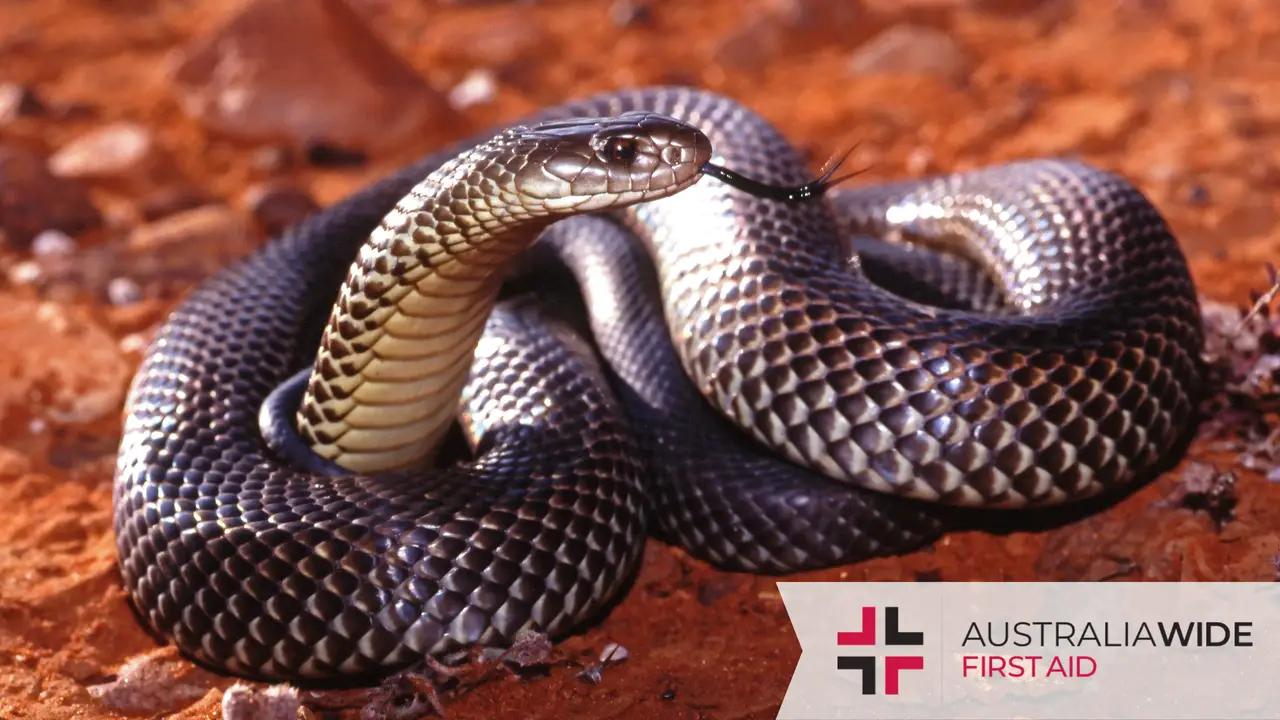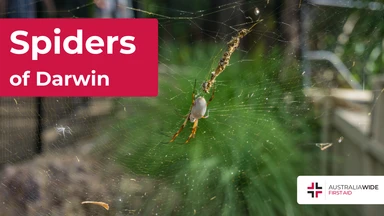The Formidable King Brown Snake


The King brown snake, otherwise known as the Mulga snake, has the widest distribution of any Australian snake.
They also have highly potent venom that can be injected in enormous quantities.
In this article, we will help you become better acquainted with the King brown and snake bite first aid.
We also cover snake bites in our general and childcare first aid courses - head to our website to find and enrol at a training location near you today.
The King brown is the most widely distributed snake in Australia. They can be found throughout the mainland, save for the furthermost southern and south-eastern parts.
They can thrive in a wide variety of habitats, including:
In these habitats, they shelter in or under:
The Australia king brown predominantly feeds on vertebrate prey, including:
They are seemingly immune to bites from their own species and at least one of their snake prey, the Western brown (Pseudonaja nuchalis).
They may be active during the day and night, though with diminished activity at midday and from midnight to dawn.
When threatened, the King brown will thrash its head and neck from side to side and hiss loudly.
If pressed further, it will subsequently lash out and bite its victim, even hanging on and chewing to express an enormous quantity of venom.
Their venom is highly toxic and can attack nerve cells, blood cells, and muscle.
As such, any bite from a King brown should be treated as a medical emergency with the Pressure Immobilisation Technique. Head to our article on snake bite first aid for more information.
Despite their name, the King brown is a member of the black snake genus and so their bites necessitate Black Snake Antivenom.
It is important to remember, snakes will never go out of their way to attack you.
As such, the best way to avoid a snake bite is to refrain from approaching, capturing, or killing snakes at home or in the wild.
If you need a snake relocated from your property, contact a professional snake catcher.
And for hands-on experience with managing snake bites, enrol in one of our general or childcare first aid courses.
We have training locations in every state, capital city, and major town throughout Australia - head to our website to find and enrol at a training location near you today.

March 11, 2025
Darwin, the tropical capital of Australia’s Northern Territory, is home to a rich diversity of wildlife - including an impressive array of spiders. From the sprawling webs of golden orb-weavers to the cryptic camouflage of trapdoor spiders, these arachnids play a vital role in the local ecosystem. While some may inspire fear, the majority are harmless and even beneficial, helping to control insect populations.

September 4, 2024
Cat bites, while often underestimated, can lead to serious health complications if not treated promptly and properly. Cats' mouths harbour a variety of bacteria that can cause infections in humans.

April 1, 2024
Encounters with wildlife can often be thrilling, but when it comes to the creature known as the drop bear, the experience can quickly turn dangerous. A sharp increase in recent attacks prompts the need for understanding proper first aid procedures in case of an attack.